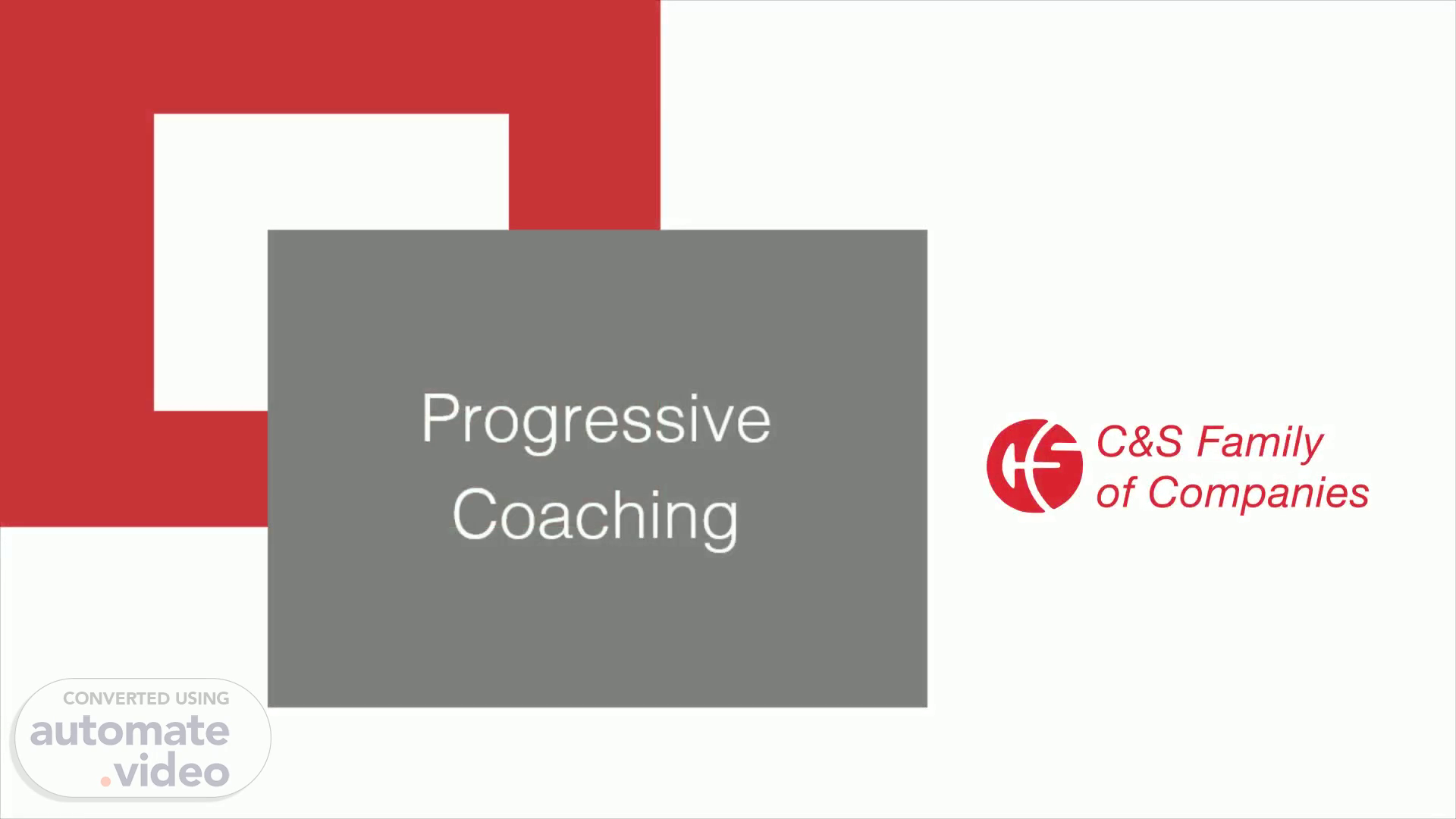
PowerPoint Presentation
Scene 1 (0s)
[Audio] Progressive coaching is a methodology and tool you can use to change employee behavior by moving away from traditional approaches to discipline and focuses more on helping retain and grow talent. By using this coaching tool, you will be able to feel confident you are doing your part to be accountable for your team improving..
Scene 2 (20s)
[Audio] As you see, there are numerous benefits to taking a coaching approach to improving performance and behavior in the workplace. A supply chain supervisor is a leader of the warehouse teams and as such, they should be focused on activities that will help their teams accomplish their tasks but should also be thinking about how to make the workplace and enjoyable and supportive environment. Now that we understand the benefits of progressive coaching, lets dive in..
Scene 3 (49s)
[Audio] To help you easily embrace Progressive Coaching, we will explore the GROW model. By following each of these steps you too will realize the benefits we have expressed..
Scene 4 (1m 2s)
[Audio] First, you start with your goal to set the purpose for the conversation with your employee. When you have an employee discipline issue or performance issue, your overall goal should be to prevent the issue from happening or raise their performance. You can state this with your employee and then ask them to have a way forward that addresses the issue by the end of the conversation. To help you prepare for clarifying the goal, there are a few questions you should consider: Why are you having this conversation? What needs to be an outcome of this conversation? What happens if you don't have the conversation? We need to have these conversations because if not, it impacts the individual who isn't performing, you as a supervisor trying to manage everyone else, the operations as whole, and that will all impact the customer experience..
Scene 5 (1m 55s)
[Audio] Once you have your goal established, you need to explore the realities of the situation. This is the time where you are exploring the issue that's happening. You're not trying to solve the problem yet, just understand it a little more. When you have an employee discipline issue or performance issue, your overall goal should be to prevent the issue from happening or raise their performance. You can state this with your employee and then ask them to have a way forward that addresses the issue by the end of the conversation. To help you dig deeper and truly understand all sides of the issue, there are a few questions you should consider: What's been going on? What has been tried before? Is there anything else holding you back? Can we still achieve what we're trying to do? There is much value in taking time to look at the issue from all sides before jumping to conclusions. This will allow you to ensure your coaching will address the actual cause of the issue rather than simply addressing the issue at a surface level..
Scene 6 (3m 3s)
[Audio] Next you can explore some options that help you achieve your goal and take into account the realities. You can tackle this as a brainstorm, where initially you just have the employee throw out ideas. You can also ask questions in different ways to help the employee think about solutions they have not considered. Some questions you could consider include: What's been going on? What has been tried before? Is there anything else holding you back? Can we still achieve what we're trying to do? If you employee gets stuck or isn't coming up with their own resolution, It is okay at times to offer solutions, but first ask their permission. This will do a lot for the engagement because they will be empowered to solve their own problems.
Scene 7 (3m 54s)
[Audio] Now it's time put an option to action in the Way Forward step. Remember the employee owns the solutions. Be specific with what will be done, who is going to do it, and when it will be done by. If needed, be sure to let them know the consequences if they don't do what's required of them and achieve the goal or correct the issue that comes up. This is likely important to document, so use Workday to note what the employee will be doing. To help your employee own their solution and ensure you are properly aligned, there are a few questions you should consider: What will be done? Who is going to do it? When will it be done?.
Scene 8 (4m 38s)
[Audio] Using the grow model, you will be able to effectively coach your employee through their performance challenges and empower them to choose, implement, and own their solution to any issue that arises..